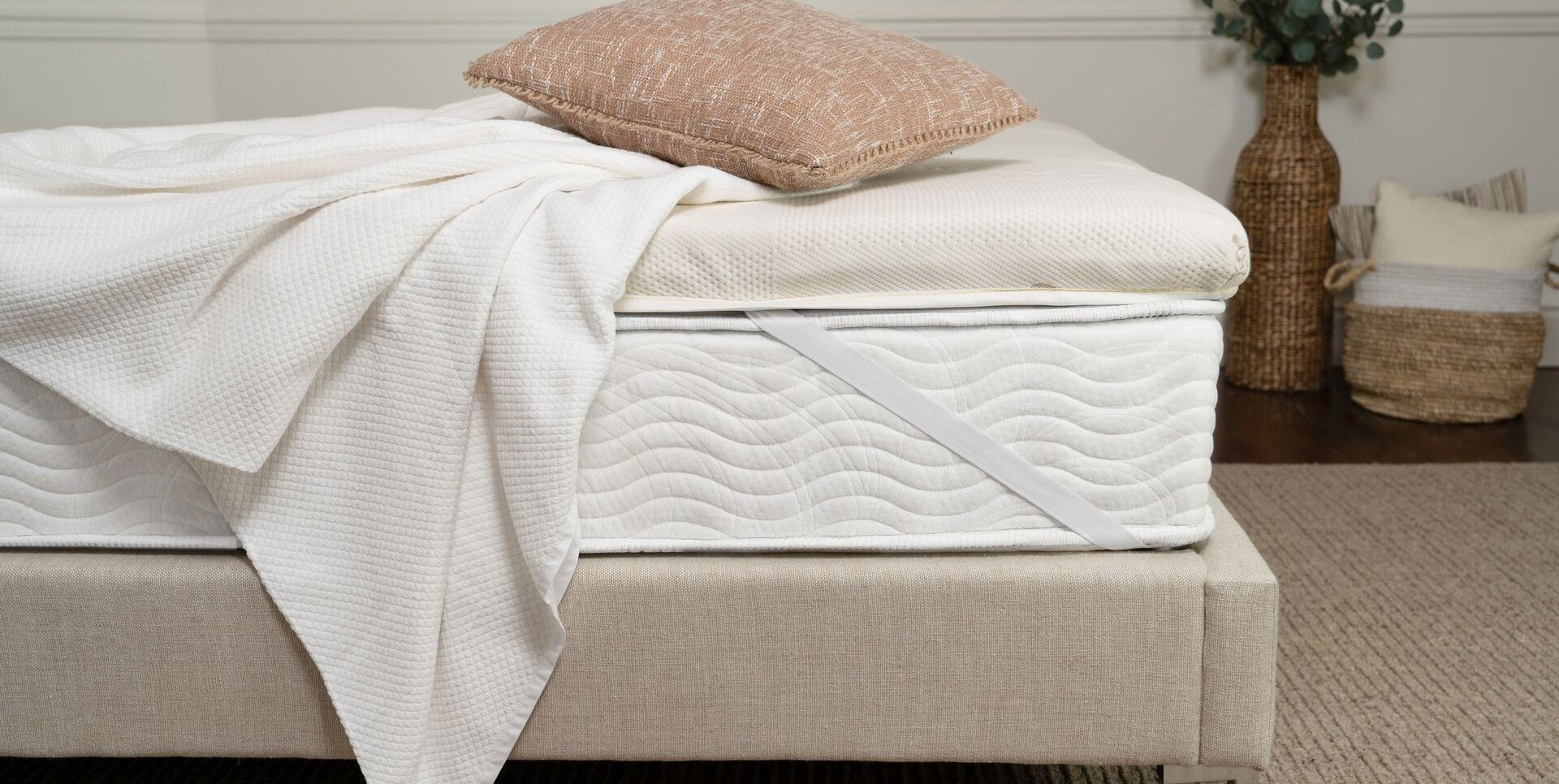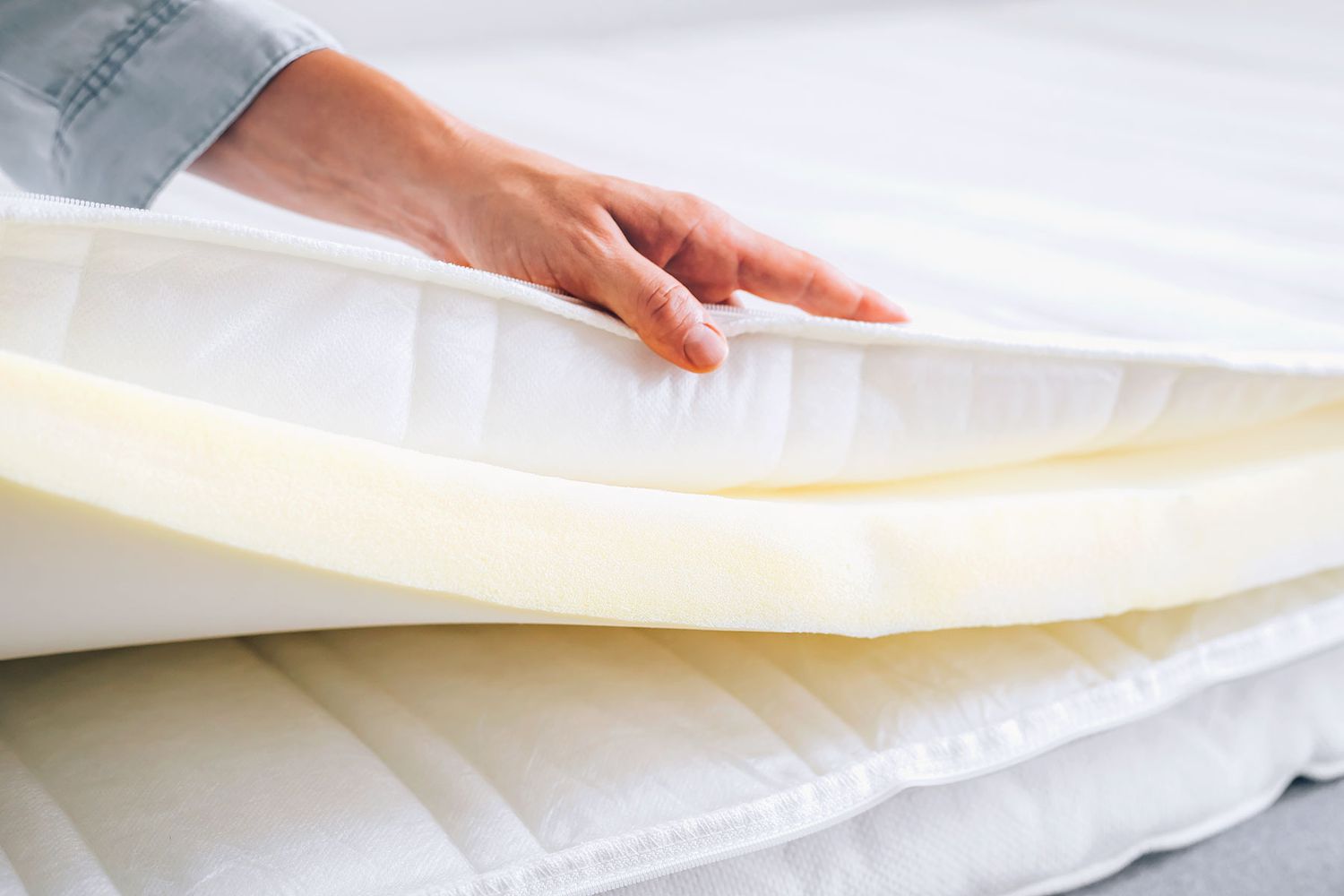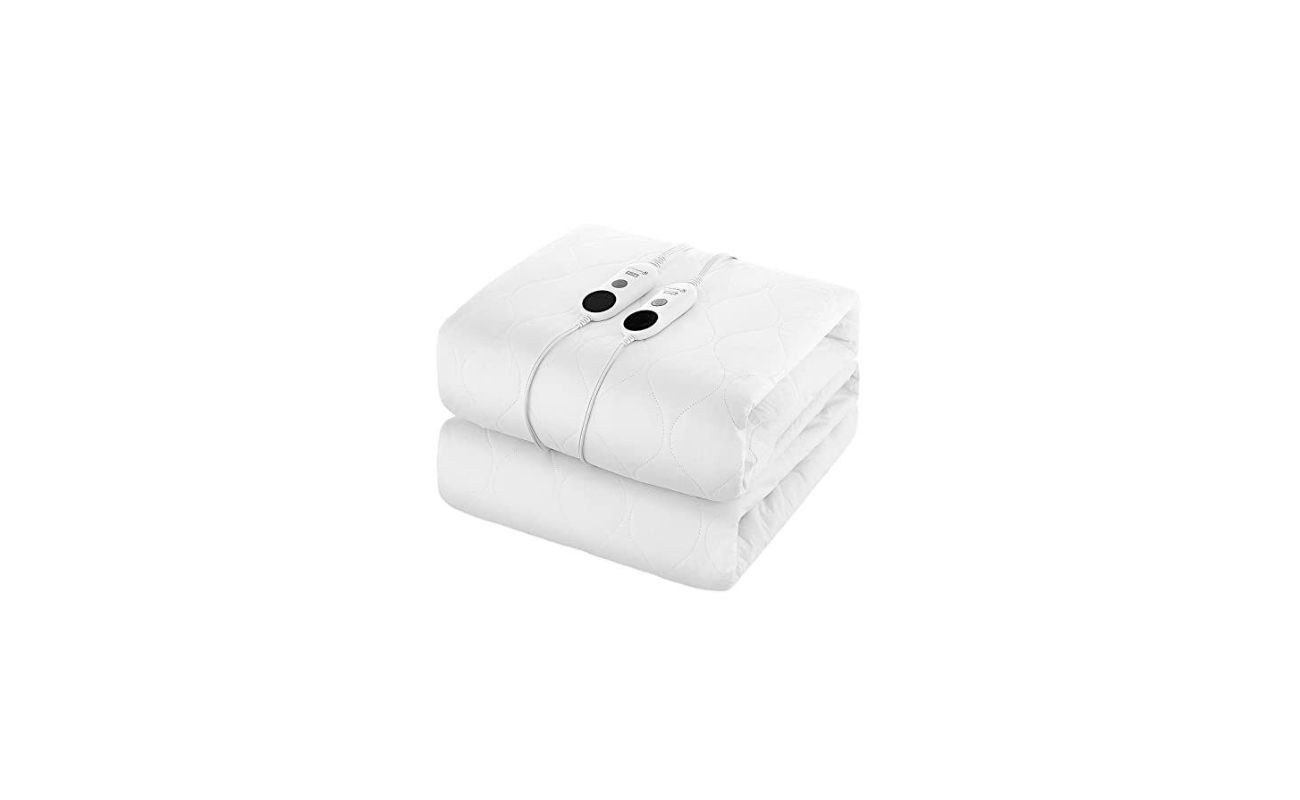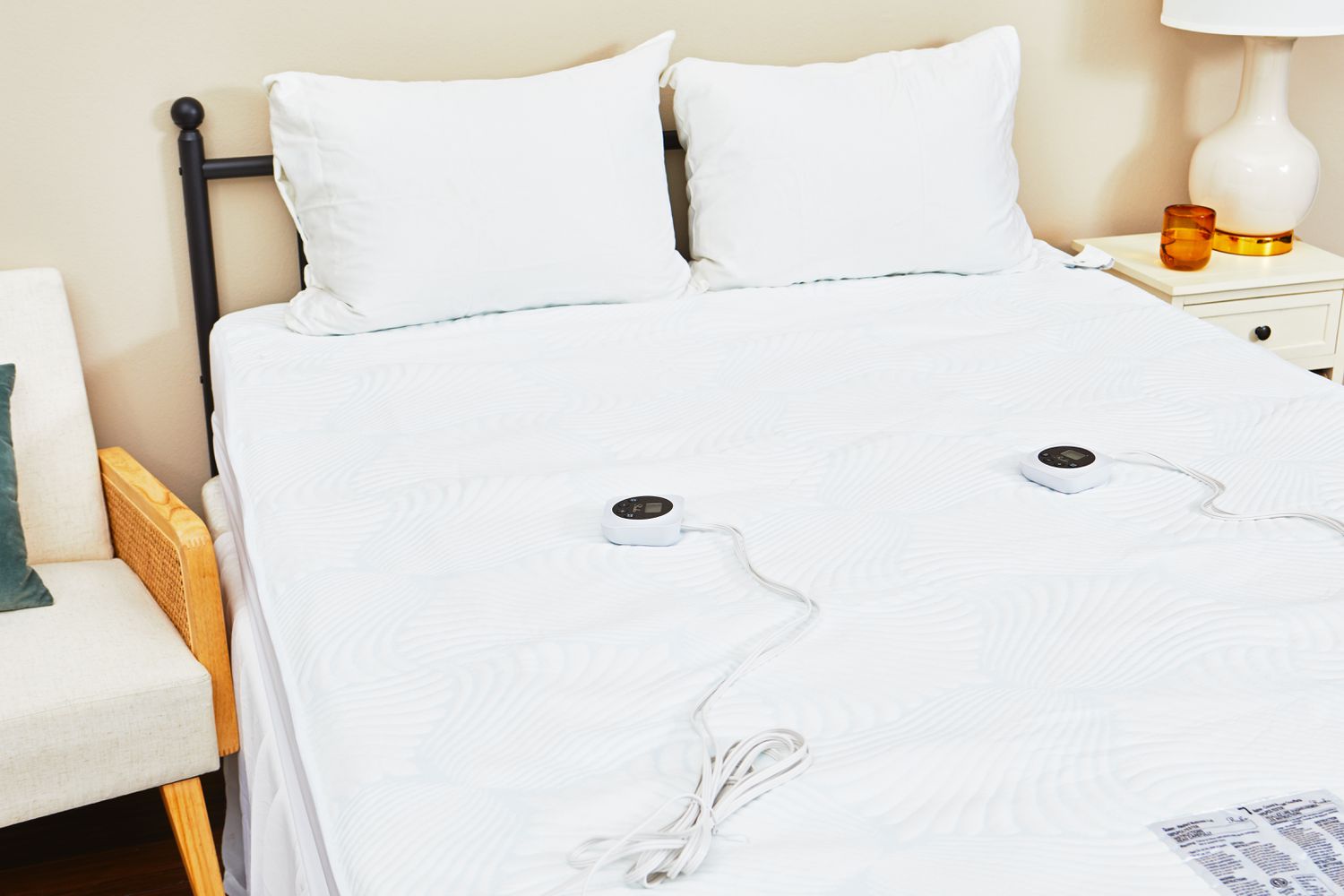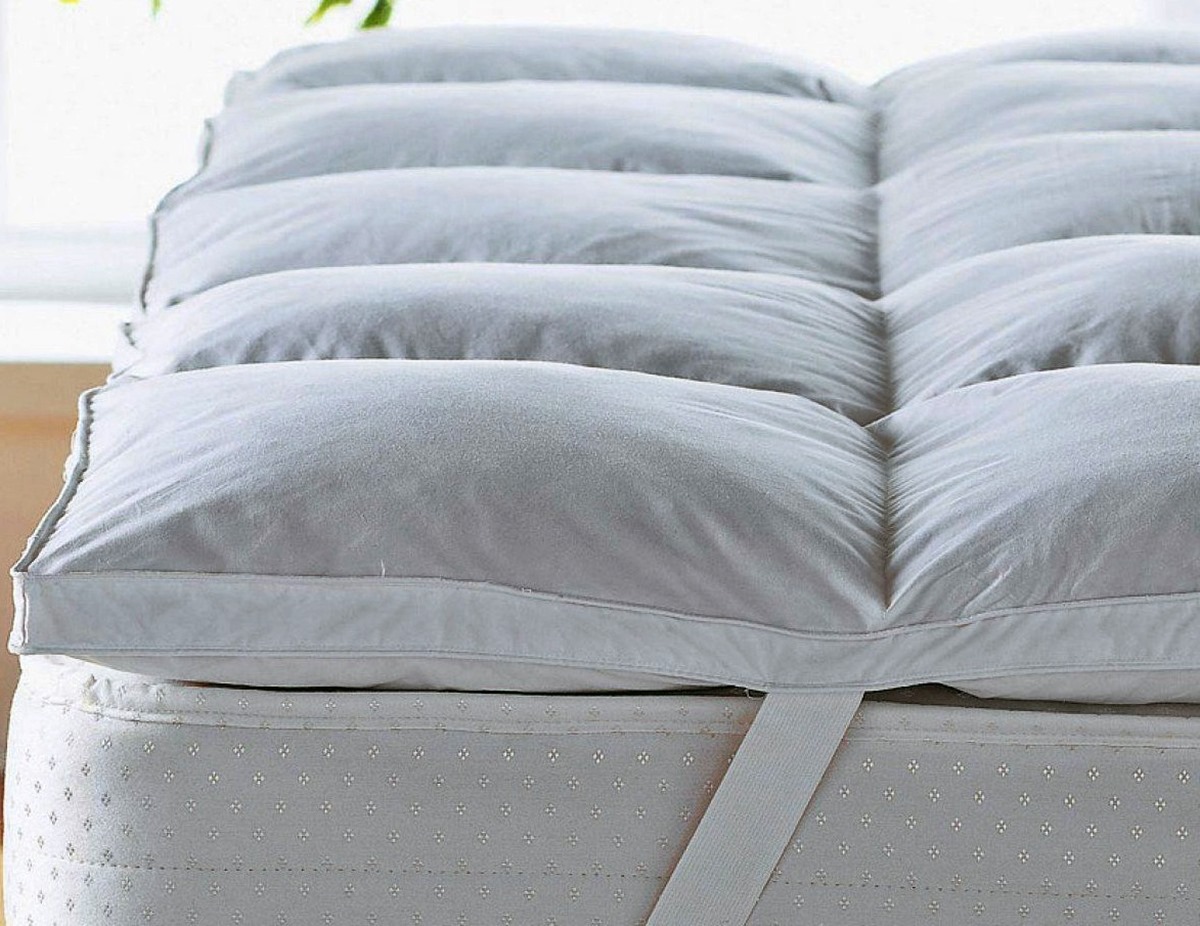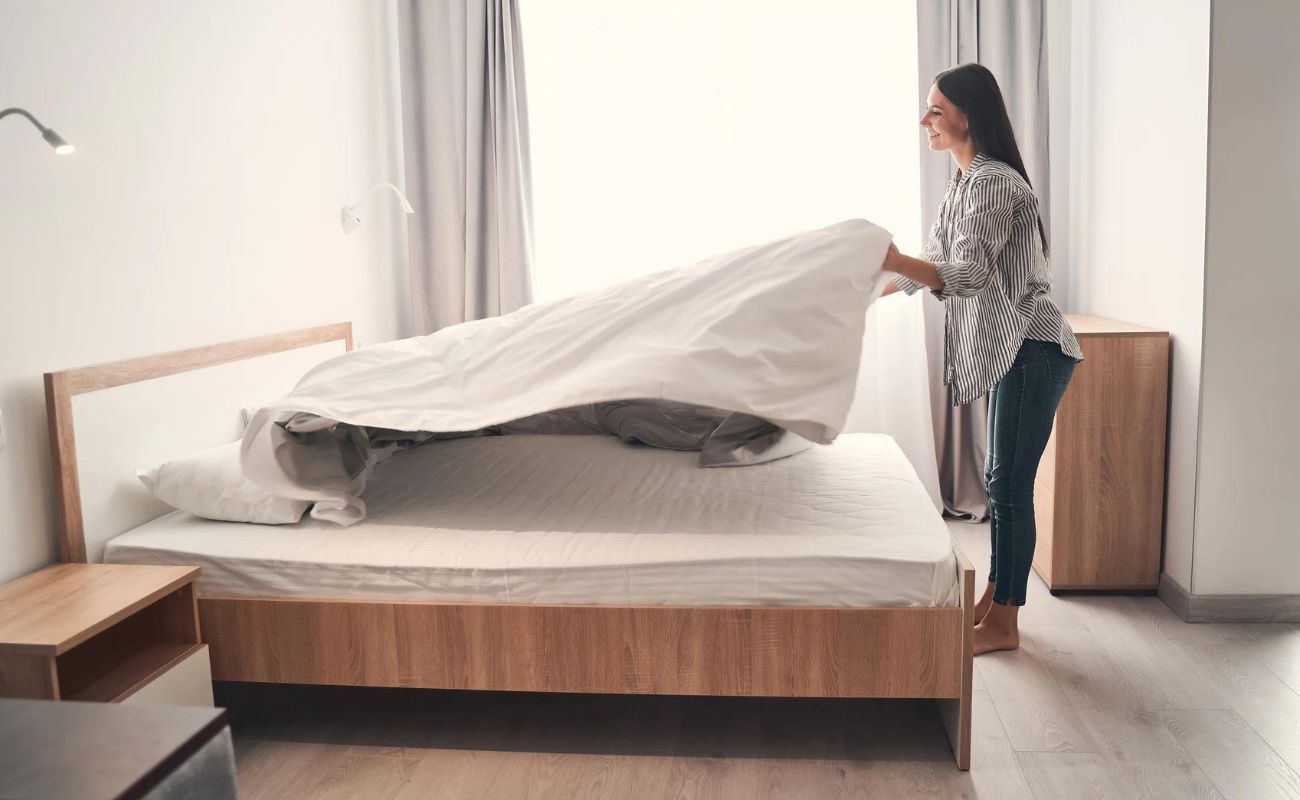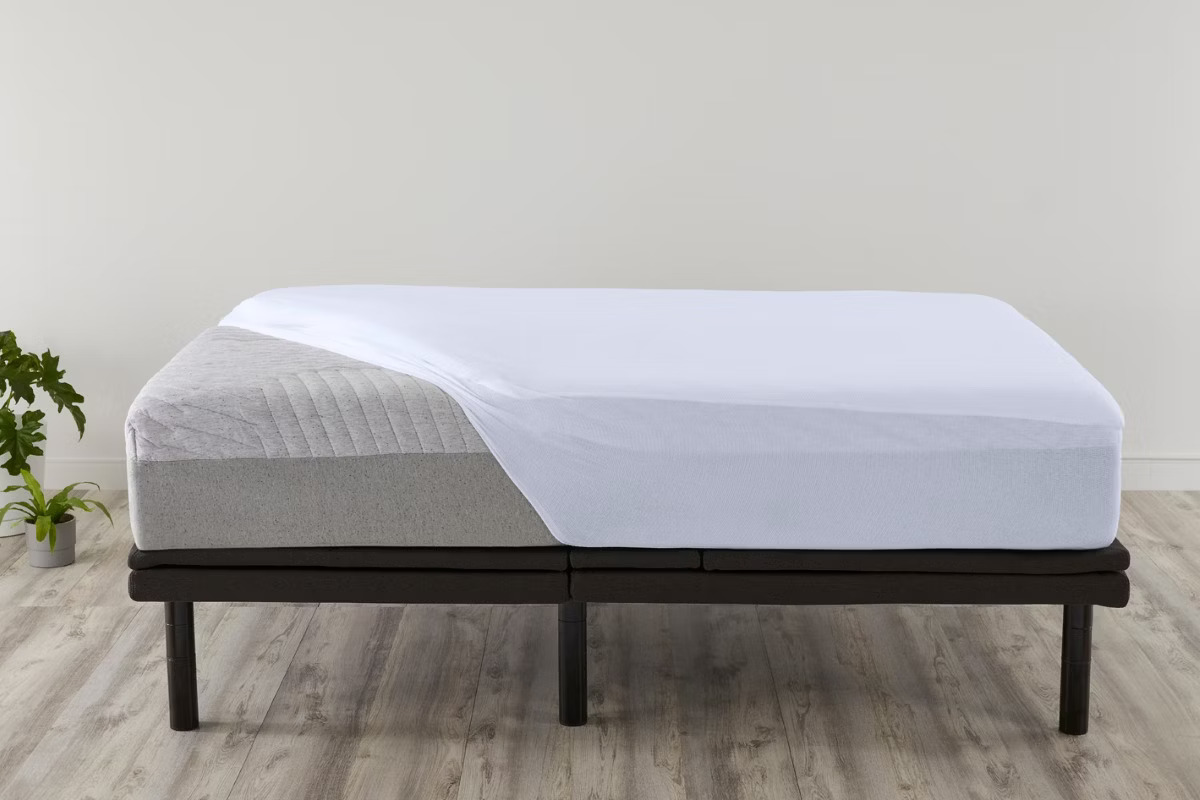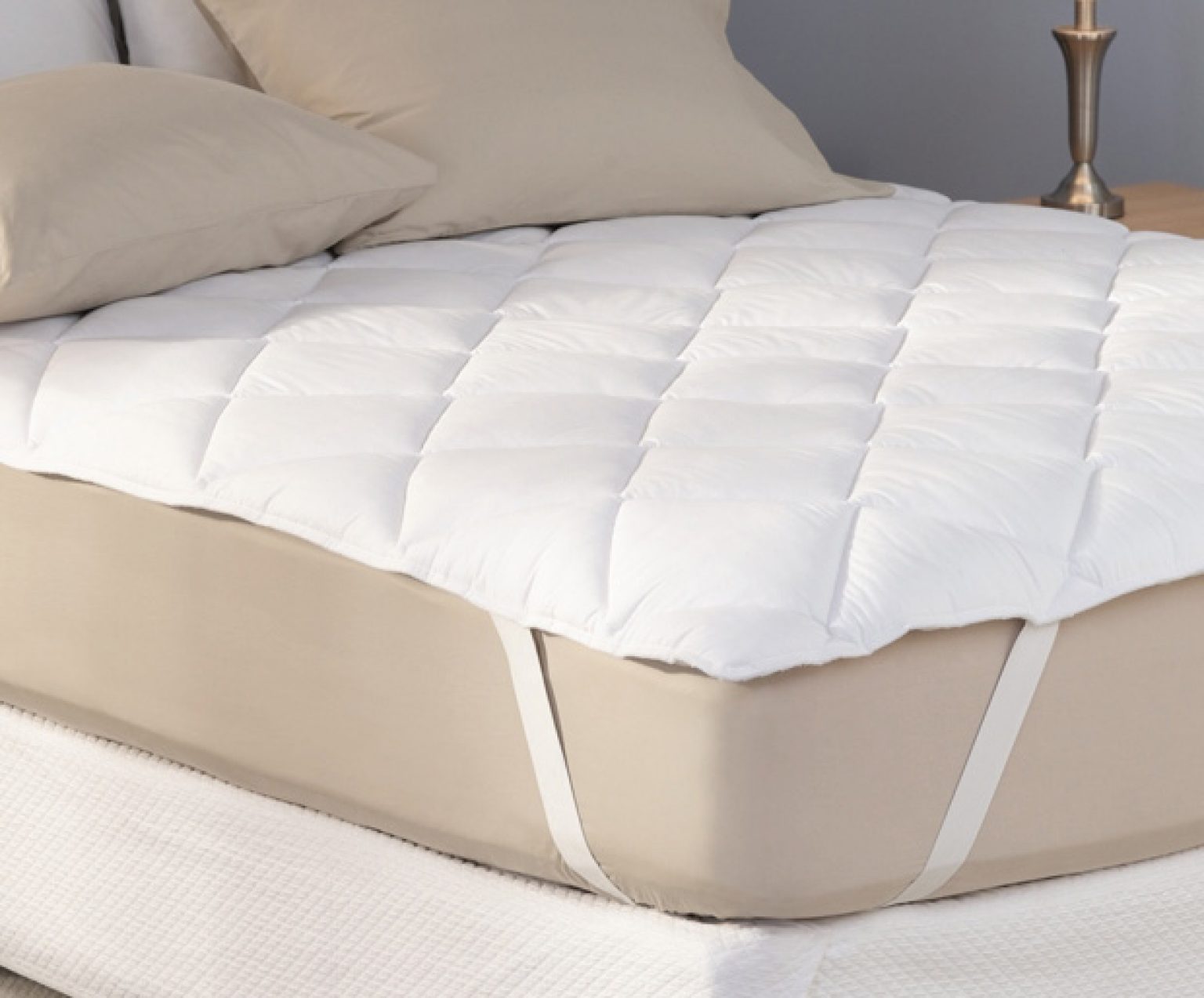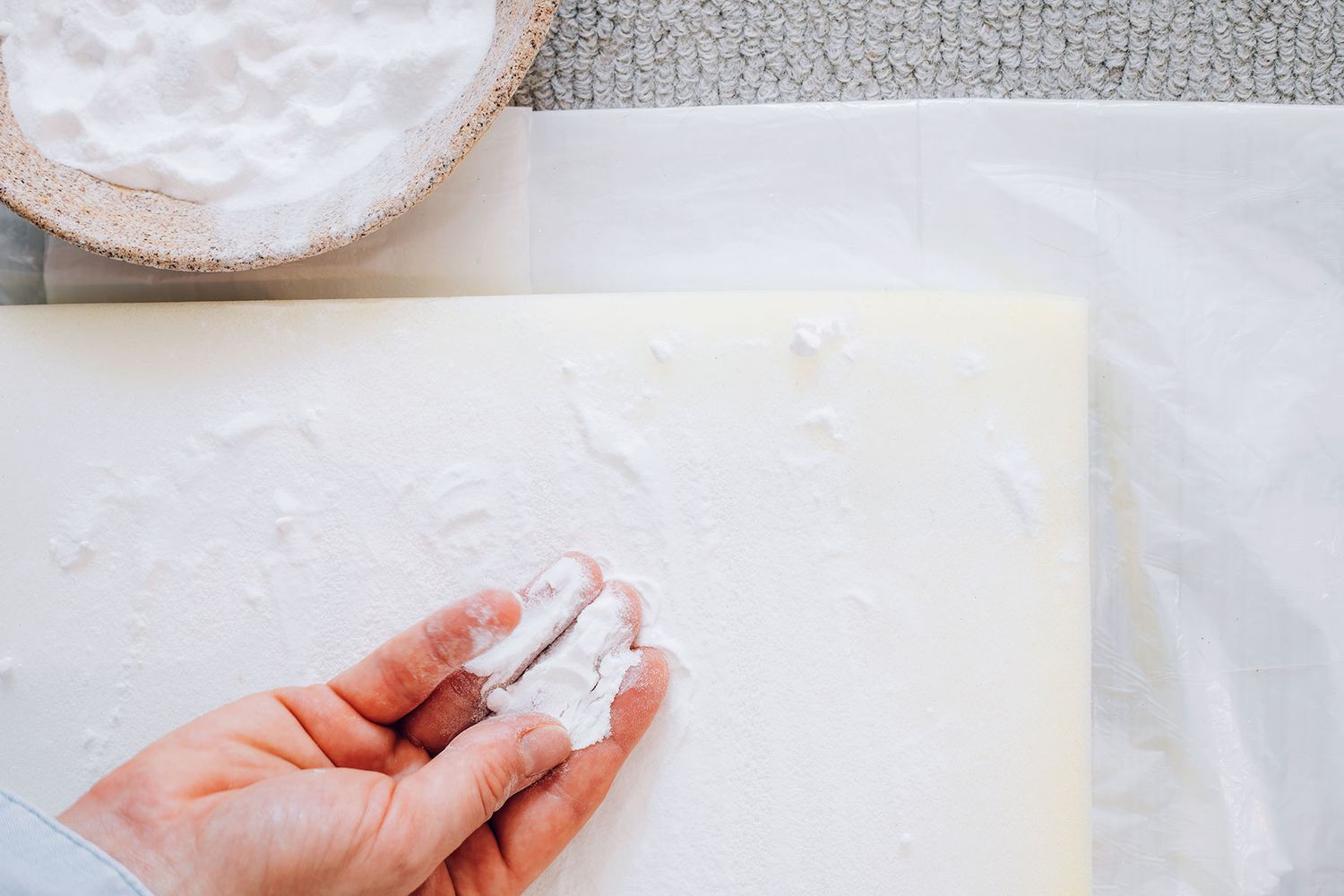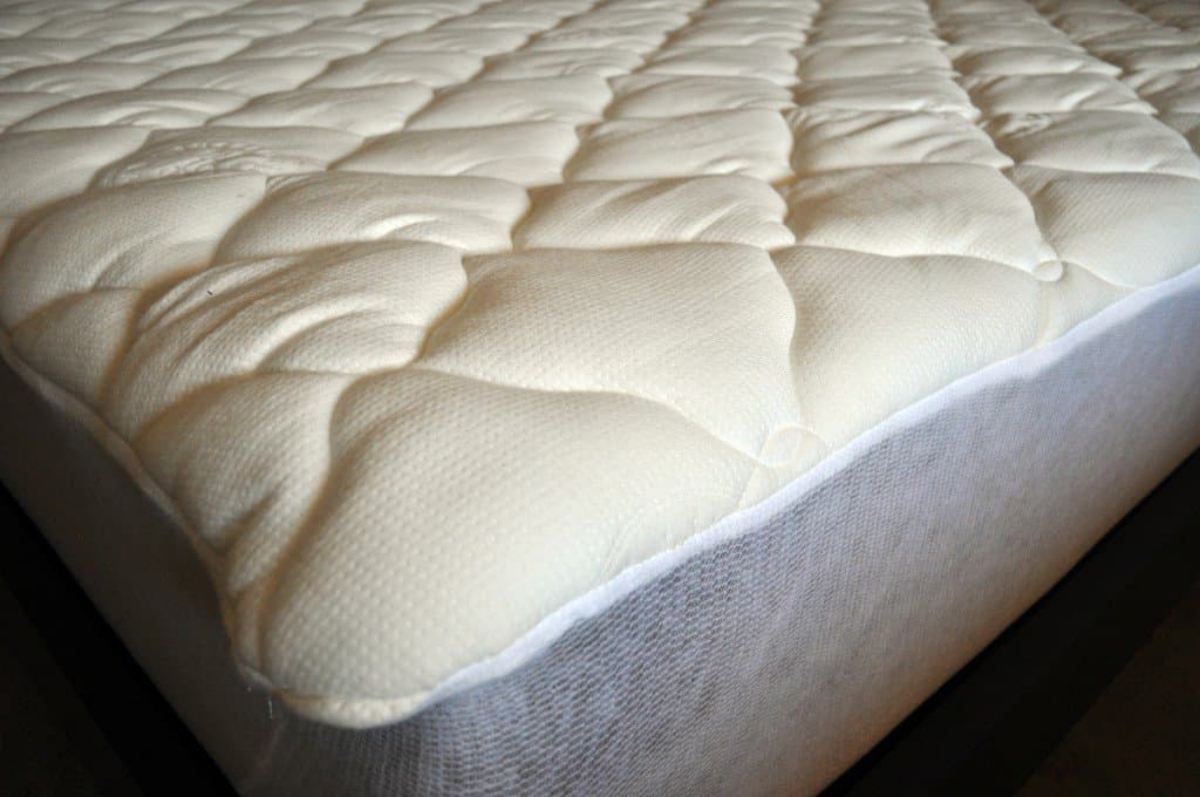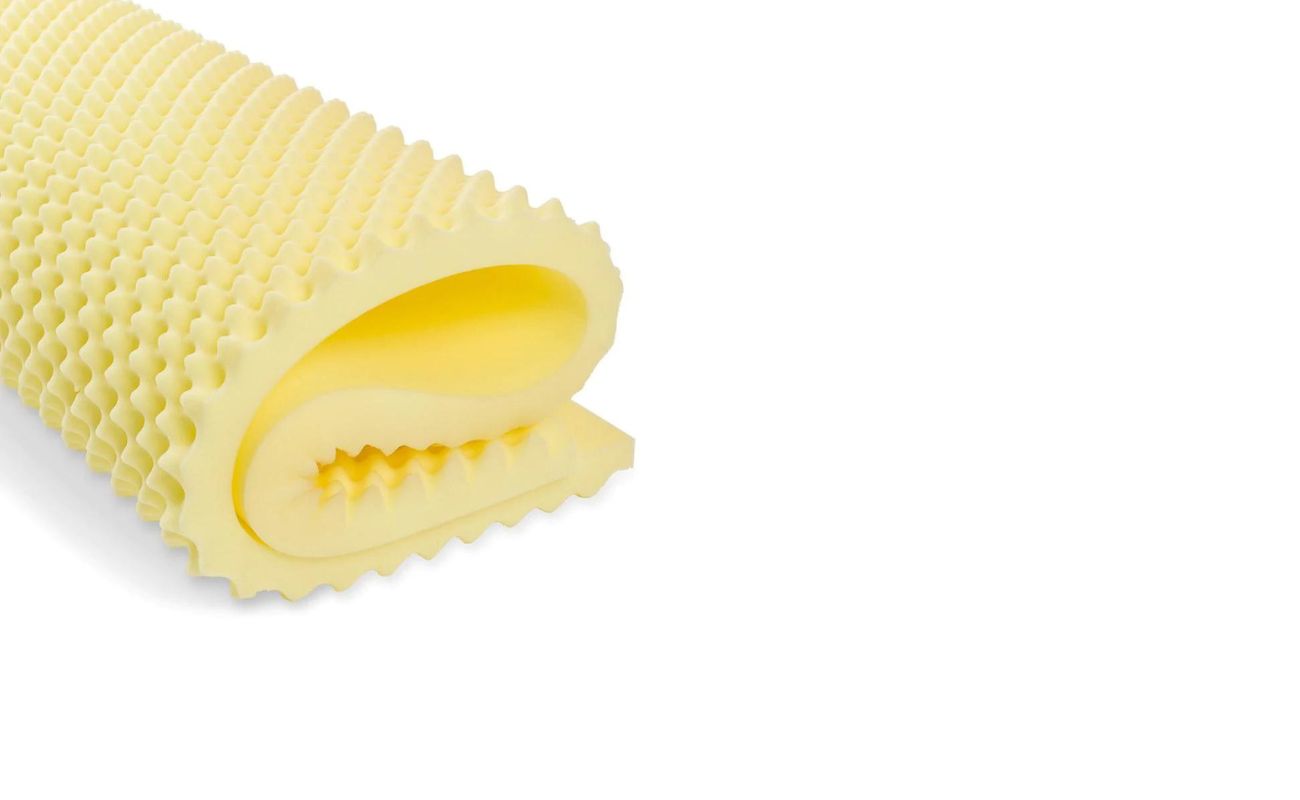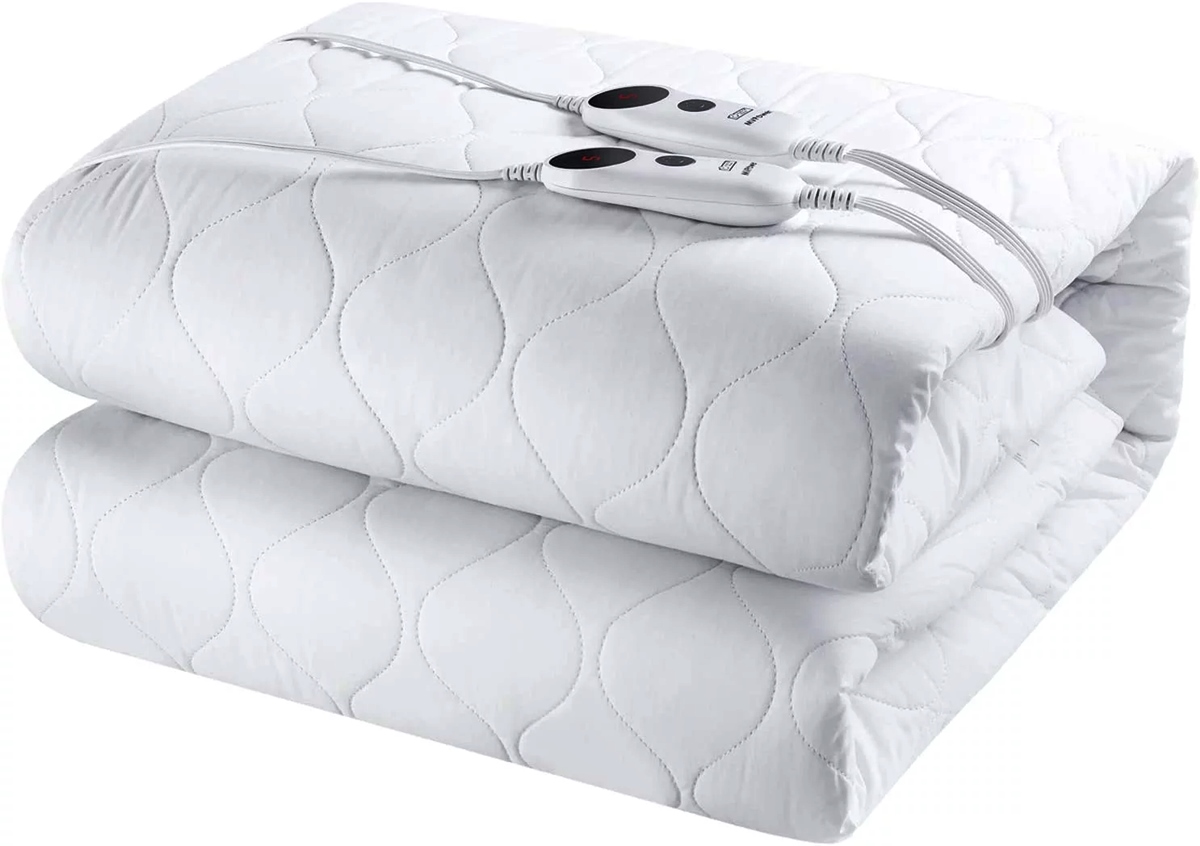Home>Furniture>Bedroom Furniture>How To Use A Mattress Pad
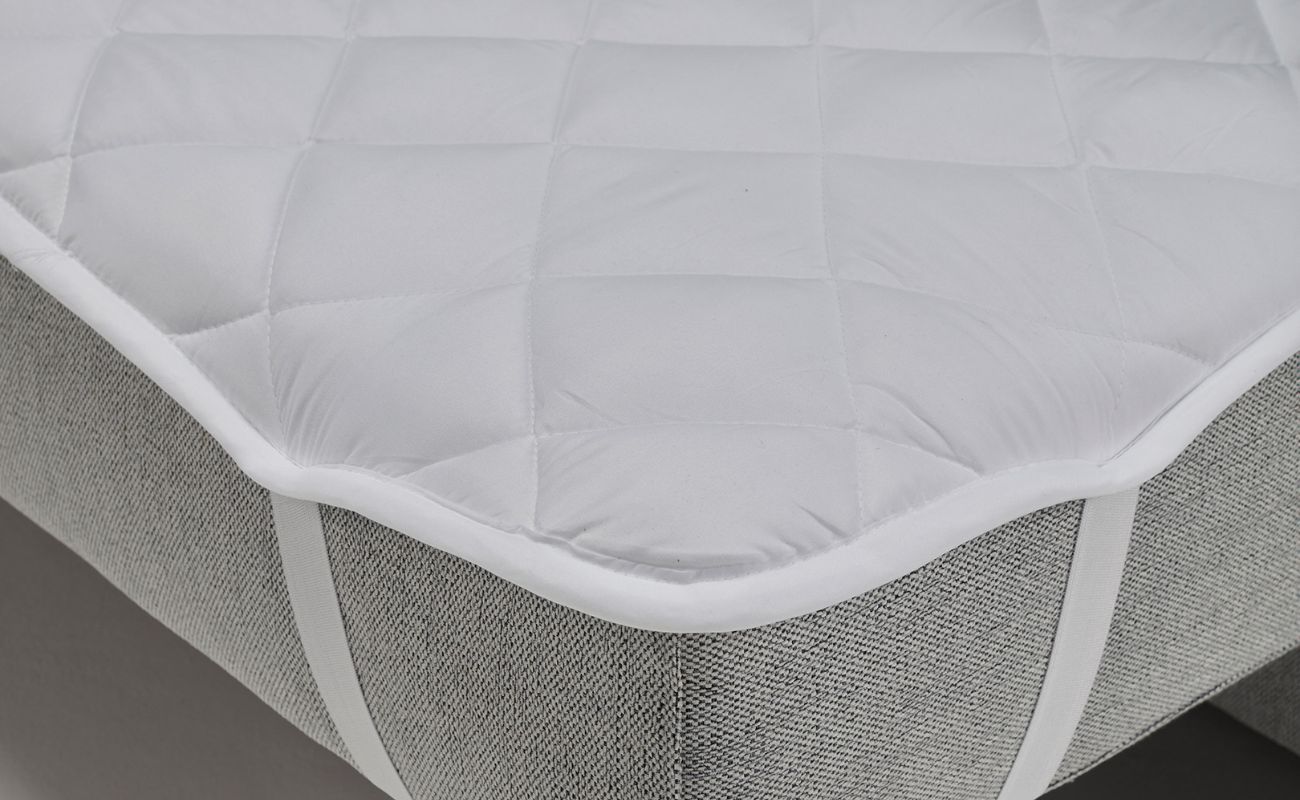

Bedroom Furniture
How To Use A Mattress Pad
Modified: January 9, 2024
Discover the ultimate guide to using a mattress pad for your bedroom furniture. Learn how to enhance comfort, extend mattress life, and protect against spills and stains.
(Many of the links in this article redirect to a specific reviewed product. Your purchase of these products through affiliate links helps to generate commission for Storables.com, at no extra cost. Learn more)
Introduction
When it comes to creating a comfortable and cozy bedroom atmosphere, the right bedding accessories can make all the difference. One essential accessory that often goes overlooked is a mattress pad. A mattress pad is a thin layer of padding that fits over your mattress, providing additional cushioning and protection. In this article, we will explore the benefits of using a mattress pad, the different types available, and how to choose the right one for your needs.
A mattress pad not only enhances the comfort of your bed but also helps to extend the life of your mattress. It acts as a barrier between your body and the mattress, protecting it from stains, spills, dust mites, and allergens. The added layer of padding can also help to minimize pressure points, relieving discomfort and promoting better sleep.
There are various types of mattress pads on the market, each offering different features and benefits. Some are designed to regulate temperature, keeping you cool in the summer and warm in the winter. Others provide extra support for those with back or joint pain. With so many options to choose from, it’s important to understand the different types available in order to make an informed decision.
Choosing the right mattress pad for your needs involves considering factors such as material, thickness, breathability, and ease of cleaning. Additionally, it’s important to ensure that the mattress pad you choose fits securely on your mattress and stays in place throughout the night. Proper installation and maintenance are essential for getting the most out of your mattress pad.
In this article, we will walk you through the process of using a mattress pad effectively. From preparing your mattress to securing the pad and maintaining its cleanliness, we will provide you with step-by-step instructions to ensure maximum comfort and longevity.
So, if you’re looking to improve your sleep experience, protect your mattress, and add an extra layer of comfort, read on to discover how to effectively use a mattress pad.
Key Takeaways:
- Enhance Comfort and Protection
Using a mattress pad not only adds extra cushioning and support to your bed but also protects your mattress from spills, stains, and allergens, contributing to a more comfortable and hygienic sleep environment. - Versatile and Practical Investment
A mattress pad offers a wide range of benefits, from temperature regulation to noise reduction, making it a versatile and cost-effective addition to your bedding. Choose the right pad to elevate your sleep experience.
Read more: How To Store A Mattress Pad
What is a Mattress Pad?
A mattress pad is a versatile bedding accessory that is placed on top of your mattress. It serves multiple purposes, including providing an extra layer of cushioning, protecting your mattress from wear and tear, and enhancing the overall comfort of your sleep surface.
Typically made of materials like cotton, polyester, or a combination of both, mattress pads are designed to be lightweight and breathable. They are available in various thicknesses, ranging from thin quilted pads to thicker pillow-top style pads.
One of the primary functions of a mattress pad is to offer additional comfort. It acts as a buffer between your body and the mattress, adding a soft layer of padding that can help alleviate pressure points and improve spinal alignment. This can be especially beneficial if your mattress is too firm or lacks proper support.
In addition to enhancing comfort, mattress pads are also designed to protect your mattress from spills, stains, allergens, and dust mites. They act as a barrier, preventing liquids from seeping into the mattress and causing damage. This is particularly helpful if you have young children or pets who are prone to accidents.
Furthermore, mattress pads can help extend the lifespan of your mattress. By preventing direct contact between your body and the mattress, they help reduce wear and tear, prolonging the life of the mattress. This can save you money in the long run, as you won’t need to replace your mattress as frequently.
Another advantage of using a mattress pad is that it adds an extra layer of insulation. Some mattress pads are designed with temperature-regulating properties, helping to keep you cool in the summer and warm in the winter. This can be especially beneficial for those who experience night sweats or live in climates with extreme temperature fluctuations.
Overall, a mattress pad is a practical and affordable investment that can significantly improve your sleep quality and protect your mattress. Whether you’re looking to add extra cushioning, safeguard your bed, or regulate temperature, a mattress pad is a versatile accessory that can cater to your specific needs.
Benefits of Using a Mattress Pad
Using a mattress pad offers a wide range of benefits that can enhance your sleep experience and protect your mattress investment. Here are some of the key advantages of using a mattress pad:
- Comfort: One of the primary benefits of using a mattress pad is the added comfort it provides. The extra cushioning can help to relieve pressure points and promote better spinal alignment, resulting in a more restful and comfortable sleep.
- Protection: Mattress pads act as a protective barrier between your body and the mattress. They help safeguard against spills, stains, sweat, and allergens, preventing them from penetrating the mattress and causing damage. This protection can help prolong the life of your mattress and maintain its cleanliness.
- Hygiene: Mattress pads are easy to remove and wash, making it convenient to maintain a clean and hygienic sleep environment. Regular washing of the mattress pad helps to eliminate allergens, dust mites, and bacteria, contributing to a healthier sleeping environment.
- Temperature Regulation: Some mattress pads are designed with temperature-regulating properties. They can help keep you cool in the summer by wicking away moisture and provide insulation during colder months, ensuring a comfortable sleep experience throughout the year.
- Added Support: If your mattress is too firm or lacks proper support, a mattress pad can provide an extra layer of cushioning and support. This can be especially beneficial for those with back, joint, or muscle pain, helping to alleviate discomfort and improve sleep quality.
- Noise Reduction: If you have a noisy or creaky mattress, a mattress pad can help reduce noise and provide a more peaceful sleep environment. The additional layer of padding absorbs movement and minimizes the sound generated by the mattress.
- Affordability: Mattress pads are generally more cost-effective compared to purchasing a brand new mattress. They provide many of the benefits of a new mattress, such as added comfort and protection, at a fraction of the cost.
Overall, using a mattress pad offers numerous benefits that can contribute to a more comfortable, hygienic, and durable sleep surface. Whether you’re looking to enhance comfort, protect your mattress investment, or regulate temperature, a mattress pad is a practical and versatile bedding accessory that can cater to your specific needs.
Types of Mattress Pads
Mattress pads come in various types, each offering unique features and benefits. Understanding the different types available can help you choose the right mattress pad that suits your specific needs. Here are some common types of mattress pads:
- Quilted Mattress Pads: Quilted mattress pads are one of the most popular types. They are made with layers of fabric that are stitched together, creating a quilted pattern. These pads provide a soft and cushioned feel, adding an extra layer of comfort to your mattress. They also help to protect your mattress from spills and stains.
- Pillow-Top Mattress Pads: Pillow-top mattress pads are designed with an additional layer of plush padding on top, resembling a small pillow. These pads offer luxurious comfort and are ideal for individuals who prefer a softer sleep surface. Pillow-top mattress pads can help relieve pressure points and provide extra support for a more restful sleep.
- Memory Foam Mattress Pads: Memory foam mattress pads are made of a viscoelastic material that conforms to the shape of your body. They provide excellent pressure relief and support, helping to alleviate aches and pains. Memory foam pads also absorb motion, making them ideal for couples as they minimize disturbances caused by movement during sleep.
- Waterproof Mattress Pads: Waterproof mattress pads are specially designed to protect your mattress from spills, stains, and liquid damage. They have a waterproof layer that prevents liquids from seeping into the mattress, making them ideal for young children, pets, or individuals with incontinence issues. They are easy to clean and maintain, providing an added layer of protection for your mattress.
- Cooling Mattress Pads: Cooling mattress pads are engineered to regulate body temperature and keep you cool throughout the night. They are often made with breathable materials that wick away moisture and provide enhanced airflow. Cooling mattress pads are an excellent choice for hot sleepers or those who live in warm climates.
- Hypoallergenic Mattress Pads: Hypoallergenic mattress pads are designed to prevent the buildup of allergens, such as dust mites, pet dander, and pollen. They are made from materials that are resistant to allergens and offer a barrier against them. Hypoallergenic mattress pads are a great choice for individuals with allergies or sensitivities.
When selecting a mattress pad, consider factors such as your preferred level of comfort, any specific sleep needs or concerns you have, and the overall durability and maintenance requirements of the pad. By choosing the right type of mattress pad, you can enhance your sleep quality and protect your mattress effectively.
How to Choose the Right Mattress Pad
Choosing the right mattress pad is crucial in ensuring a comfortable and supportive sleep surface. Here are some factors to consider when selecting the perfect mattress pad for your needs:
- Material: Consider the materials used in the mattress pad. Common materials include cotton, polyester, memory foam, and blends of different fabrics. Each material has its own advantages and feel, so choose one that suits your preferences and requirements.
- Thickness: Think about the level of cushioning you desire. Thicker mattress pads provide more padding while thinner ones offer a more minimalistic feel. Consider your comfort needs and the current condition of your mattress to determine the ideal thickness for your pad.
- Breathability: If you tend to sleep hot, opt for a mattress pad with good breathability. Look for materials that promote airflow and moisture-wicking properties to help keep you cool and dry throughout the night.
- Support: For individuals with specific sleep concerns, such as back or joint pain, choose a mattress pad that offers adequate support. Memory foam and latex pads are known for their contouring and supportive properties, while pillow-top pads provide a plush and cushioned feel.
- Size and Fit: Ensure that the mattress pad you choose matches the size of your mattress. It should have an accurate fit and stay securely in place. Consider the depth of your mattress as well, as some mattress pads are designed to accommodate thicker mattresses.
- Ease of Cleaning: Look for a mattress pad that is easy to maintain and clean. Machine-washable pads are convenient and allow you to keep your bed fresh and hygienic. Also, consider if the pad is resistant to stains or has a protective barrier against allergens and dust mites.
- Price and Warranty: Set a budget for your mattress pad purchase and compare prices from different brands. Additionally, check if the pad comes with a warranty to ensure you are protected against any manufacturing defects or premature wear.
Ultimately, the right mattress pad for you will depend on your unique preferences, sleep needs, and budget. Consider the features that are most important to you and prioritize accordingly. By carefully selecting a mattress pad that aligns with your requirements, you can elevate the comfort and protection of your sleep surface.
When using a mattress pad, make sure to secure it tightly to the mattress to prevent it from shifting or bunching up. This will help to maintain its comfort and protection benefits.
Read more: How To Store Mattress Pad
Step 1: Preparing Your Mattress
Before placing your mattress pad on the bed, it’s essential to properly prepare your mattress to ensure optimal comfort and durability. Here are the steps to follow:
- Clean the Mattress: Start by cleaning your mattress to remove any dust, dirt, or stains. Vacuum the surface of the mattress and spot clean any visible stains using a mild detergent or upholstery cleaner. Allow the mattress to air dry completely before proceeding.
- Check for Damage: Inspect your mattress for any signs of damage, such as tears, sagging, or broken springs. Address any issues found or consider replacing your mattress if it is significantly worn out or uncomfortable. A mattress pad can enhance your sleep experience, but it cannot fix structural problems with your mattress.
- Flip or Rotate: If your mattress is double-sided or designed to be flipped, consider rotating or flipping it according to the manufacturer’s instructions. This helps to distribute the wear evenly and extend the lifespan of your mattress.
- Ensure a Stable Foundation: Verify that your bed frame or foundation is sturdy and provides proper support for your mattress. A sagging or unstable foundation can affect the comfort and longevity of your mattress and mattress pad.
- Air Out the Mattress: If your mattress has been stored or sealed for an extended period, allow it to air out for a few hours to remove any trapped odors or moisture. This will help ensure a fresh and pleasant sleeping environment.
By properly preparing your mattress, you can create an ideal foundation for your mattress pad and ensure that you enjoy the maximum benefits of both the pad and the mattress. Taking the time to clean, inspect, and maintain your mattress will contribute to a more comfortable and hygienic sleep experience.
Step 2: Placing the Mattress Pad on the Bed
Once you have prepared your mattress, it’s time to place the mattress pad on the bed. Follow these steps to ensure proper placement:
- Unpack and Unfold: Start by removing the mattress pad from its packaging and carefully unfold it. Take note of any instructions or tags attached to the pad for specific guidance.
- Center the Pad: Position the mattress pad in the center of your bed, aligning it with the edges of the mattress. Ensure that it covers the entire surface area of the mattress, from head to foot and side to side.
- Smooth Out Wrinkles: Smooth out any wrinkles, folds, or creases in the mattress pad. Tug gently on the corners and edges, making sure that the pad lays flat and evenly on the mattress. This will prevent any discomfort or uneven padding during sleep.
- Align with Mattress: Align the corners of the mattress pad with the corners of your mattress. Check that each corner is properly tucked in and secure to prevent the pad from shifting or sliding during use.
It’s important to ensure that the mattress pad is placed evenly and securely on the mattress. This will prevent any slipping or bunching up that could compromise your comfort and the effectiveness of the pad. Taking the time to properly position the mattress pad will ensure a smooth and comfortable sleep surface.
Step 3: Securing the Mattress Pad
Once you have placed the mattress pad on your bed, it’s time to secure it to prevent any shifting or movement during sleep. Follow these steps to ensure your mattress pad stays in place:
- Anchor Straps: Many mattress pads come with anchor straps or elastic bands that help secure them to the corners of the mattress. Locate these anchor straps and stretch them over each corner of the mattress, ensuring a snug and secure fit.
- Fitted Skirt: Some mattress pads have a fitted skirt that wraps around the sides of the mattress. Pull this skirt down tightly, ensuring that it overlaps the sides of the mattress and stays in place.
- Tuck-in Method: If your mattress pad does not have anchor straps or a fitted skirt, you can use the tuck-in method. Tuck the edges of the mattress pad beneath the mattress, creating a secure and tucked-in appearance. Smooth out any wrinkles or folds for a clean and neat look.
- Mattress Protector: If you’re using a mattress pad as a protective barrier against spills and stains, consider adding a waterproof mattress protector over the pad. This extra layer of protection can further safeguard your mattress and the mattress pad itself.
Securing the mattress pad in place is essential to maintain its position and prevent any discomfort or inconvenience during sleep. Using anchor straps, a fitted skirt, or the tuck-in method will ensure that the mattress pad stays securely in place throughout the night.
Step 4: Maintaining and Cleaning the Mattress Pad
To keep your mattress pad fresh, clean, and in optimal condition, regular maintenance and cleaning are necessary. Follow these steps to maintain and clean your mattress pad:
- Read the Care Instructions: Before cleaning your mattress pad, carefully read and follow the care instructions provided by the manufacturer. These instructions will outline the recommended cleaning methods and any specific precautions to take.
- Regularly Wash the Mattress Pad: It’s important to clean your mattress pad regularly to remove dirt, allergens, and stains. Most mattress pads are machine washable, but make sure to double-check the care instructions. Use a gentle cycle and a mild detergent to avoid damaging the fibers of the pad. Consider adding vinegar or baking soda to the wash for extra freshness and odor elimination.
- Dry Thoroughly: After washing, dry the mattress pad thoroughly before placing it back on your bed. You can air-dry it or use a low heat setting in the dryer. Avoid high heat, as it can damage the fabric and shrink the pad.
- Spot Clean Stains: For small stains or spills, spot clean the affected area using a mild detergent or stain remover. Gently blot the stain with a clean cloth or sponge, being careful not to scrub or rub vigorously, as this can damage the fabric.
- Protect with a Mattress Cover: To shield your mattress pad from spills, accidents, and allergens, consider using a removable and waterproof mattress cover. This additional layer of protection will extend the lifespan of your mattress pad and make it easier to clean.
- Rotate and Flip: To ensure even wear and prolong the life of your mattress pad, consider rotating and flipping it along with your mattress. This will distribute the pressure evenly and prevent one side of the pad from wearing out faster.
By following these maintenance and cleaning steps, you can ensure that your mattress pad stays fresh, clean, and comfortable for an extended period. Regular upkeep and proper care will help maintain the quality and longevity of your mattress pad, contributing to a hygienic and comfortable sleep environment.
Read more: How To Wash A Mattress Pad
Conclusion
A mattress pad is a versatile and practical bedding accessory that can significantly enhance your sleep experience. By providing additional comfort, protection, and support, a mattress pad offers numerous benefits that contribute to a restful and rejuvenating sleep.
When choosing a mattress pad, consider factors such as material, thickness, breathability, and ease of cleaning. Select a pad that aligns with your preferences and specific sleep needs to ensure optimal comfort and satisfaction.
Properly preparing your mattress and placing the mattress pad securely on your bed are crucial steps to maximize its effectiveness. By following the recommended steps, you can ensure that your mattress pad stays in place, providing consistent comfort and protection throughout the night.
Regular maintenance and cleaning of your mattress pad are essential to keep it fresh and hygienic. Follow the care instructions provided by the manufacturer to ensure the longevity and performance of your pad. Additionally, consider using a mattress cover for added protection and ease of cleaning.
In conclusion, a mattress pad is a valuable investment that can enhance your sleep quality, protect your mattress, and contribute to a healthier sleep environment. By choosing the right pad, properly preparing your mattress, securing the pad in place, and maintaining its cleanliness, you can enjoy the ultimate sleep experience and prolong the life of your mattress for years to come.
Frequently Asked Questions about How To Use A Mattress Pad
Was this page helpful?
At Storables.com, we guarantee accurate and reliable information. Our content, validated by Expert Board Contributors, is crafted following stringent Editorial Policies. We're committed to providing you with well-researched, expert-backed insights for all your informational needs.
